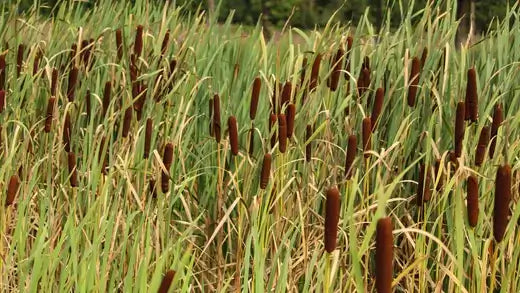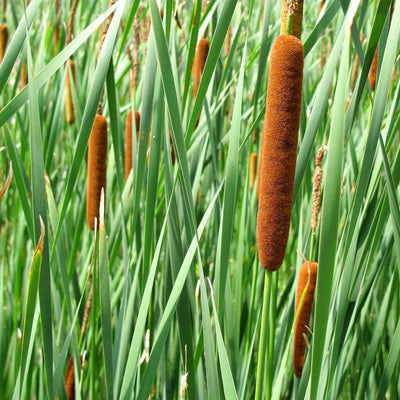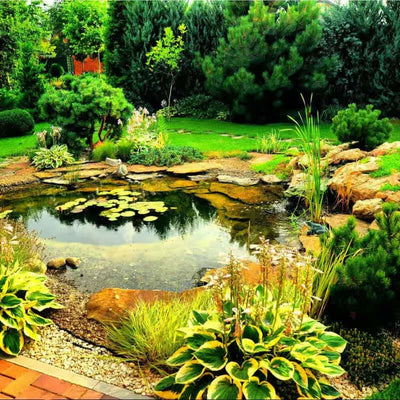Planting and Growing Cattails:
A Comprehensive Guide Cattails (Typha spp.) are a unique and versatile aquatic plant that thrives in wetland environments. Known for their distinctive cylindrical flower spikes and tall, slender leaves, cattails are crucial in maintaining ecological balance in wetlands and providing habitat for various wildlife species. If you're interested in cultivating cattails, whether for their aesthetic appeal or environmental benefits, this comprehensive guide will walk you across planting and growing cattails successfully.
Understanding Cattails:
Cattails belong to the Typhaceae family and are found in various wetland habitats, including ponds, marshes, and shorelines. They are recognized by their iconic brown flower spikes that resemble hotdogs or sausages and their long, linear leaves that resemble grass. Cattails are not only visually appealing but also offer essential ecological functions. They help stabilize soil, filter water, and provide habitat and food sources for large aquatic and terrestrial species.
Selecting the Right Location:
Before you begin planting cattails, selecting the correct location is crucial. Cattails are well-suited to wetland environments, so consider areas with consistently moist or shallow water conditions. Ideal locations include the edges of ponds, marshes, or slow-moving streams. The soil should be rich in organic matter and slightly acidic to neutral pH.
Planting Cattails: Gathering Seeds or Rhizomes: Cattails can be propagated through seeds or rhizomes. Rhizomes are the underground stems of the plant. If you're using sources, collect them from mature cattail flower heads. If using rhizomes, carefully dig them from established cattail stands, ensuring you take some root mass.
Preparing the Planting Area: Clear the area of any weeds, debris, or competing vegetation. Dig a shallow trench in the soil about 2-4 inches deep. This trench will help retain moisture and encourage the cattails to take root.
- Planting Seeds: If using seeds, scatter them along the bottom of the trench. Lightly cover the bases with a thin layer of soil. Press the ground down gently to ensure good seed-to-soil contact.
- Planting Rhizomes: If using rhizomes, place them horizontally in the trench, about 12-18 inches apart. Cover the rhizomes with soil, ensuring they are at the appropriate depth and not too deep.
- Watering: After planting, thoroughly water the area to ensure moist soil. Cattails thrive in wet conditions, so keeping the ground consistently moist is essential for their establishment.
Cattail Care: Growing cattails requires some primary care and attention to ensure their healthy development: Watering: As mentioned, cattails require consistently moist soil. If the natural water levels in your planting area are insufficient, consider supplementing with additional water, especially during dry periods.
- Fertilization: Cattails generally don't require heavy fertilization. However, if you notice slow growth or yellowing leaves, you can apply a balanced aquatic plant fertilizer following the manufacturer's instructions.
- Thinning: Cattails can become quite dense over time. To maintain healthy growth and prevent overcrowding, consider thinning out the stand by removing excess plants. This also encourages air circulation, reducing the risk of disease.
- Managing Invasive Spread: While cattails have many benefits, some species can become invasive and dominate other native plant species. Monitor the growth and spread of cattails and take action if they overwhelm the ecosystem.
- Harvesting: Cattails have various valuable parts. Growing shoots can be harvested in the spring and used in salads or as cooked vegetables. The mature flower spikes can be dried and used for decorative purposes, such as flower arrangements. However, be cautious not to overharvest from natural populations.
Benefits of Growing Cattails: Erosion Control: Cattails' extensive root systems help stabilize soil along shorelines and prevent erosion.
- Water Filtration: The roots of cattails are adept at absorbing excess nutrients and pollutants from water, improving water quality.Cattails are excellent natural water purifiers. Their root systems act as filters, absorbing excess nutrients, sediment, and pollutants from the water. Doing so helps improve water quality, reducing the risk of harmful algal blooms and maintaining the overall health of aquatic ecosystems.
- Habitat and Wildlife: Cattail stands provide nesting and sheltering sites for various aquatic and avian species. They also offer food sources for insects, birds, and small mammals.
- Aesthetics: Cattails add a unique and attractive element to aquatic landscapes, enhancing the visual appeal of ponds and wetlands.
Food Sources: Cattails offer sustenance to a range of animals. Insects and aquatic invertebrates inhabit the dense growth, becoming a food source for birds and amphibians. Additionally, the young shoots of cattails are edible for humans, offering a nutritious vegetable option.
- Carbon Sequestration: Cattails contribute to carbon sequestration by trapping carbon dioxide from the atmosphere and storing it in their biomass. This aids in mitigating climate change impacts.
- Aesthetic Value: Beyond their ecological significance, cattails add a touch of beauty to wetland landscapes. Their iconic cylindrical flower spikes and graceful leaves create picturesque scenes, enhancing the visual appeal of natural and cultivated environments.
- Educational Opportunities: Growing cattails can be an educational tool, helping individuals understand wetland ecosystems and the importance of conserving these valuable habitats. Observing the interactions between cattails and various wildlife species can foster a deeper appreciation for nature.
- Cultural Uses: Historically, indigenous cultures have used various parts of the cattail plant for practical purposes. From crafting materials to food sources, cattails have been an essential resource for many cultures throughout history.
Potential Challenges: Invasive Behavior: Some cattail species can become invasive and displace native plant species, disrupting the natural balance of ecosystems.
Maintenance: Cattails require ongoing management to prevent them from taking over and to maintain a healthy wetland habitat.
Disease and Pests: While cattails are generally hardy, they can be susceptible to certain conditions and pests. Regular monitoring can help identify and address these issues early.
Conclusion:
Planting and growing cattails can be rewarding and bring aesthetic beauty and ecological benefits to your wetland environment. Cattails are a versatile and valuable addition if you're looking to enhance your pond's appearance or contribute to local ecosystem health. By understanding their growth requirements, providing proper care, and addressing potential challenges, you can successfully cultivate cattails and enjoy their many advantages. Always consider the specific conditions of your planting site and local environmental regulations when introducing any new plant species.



